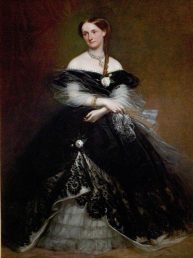There are books so generous that you can’t resist them. They welcome the readers through an already open door with the incentive of a freshly brewed to-dream-of tea. Raymond Hargreaves’s book about Bolton’s Victorian years is one of them.
From the foreword, we are made aware that the book “is the story of the people of Bolton, and their environment in the Victorian Years of 1850 to 1860, as seen through the columns of the Bolton Chronicle.” (Hargreaves, 1985, p.xiii). Hargreaves also notes that “Bolton was a disreputable product of the Industrial Revolution” (p.xiii) and was described in Engels’s report of The Conditions of the Working Class in England in 1844 as having just a very dirty and unappealing main street – Deansgate – which served also as a market.
From the Halliwell Local History Society’s website, we find that the Bolton Chronicle was “printed and published by Thomas Cropp, [and] began on 9th October 1824, price 7d. Ownership passed through several hands until it was produced by James Hudsmith, 26th October 1850 at 12 Folds Street, after his death production was continued by his Executor at Knowsley Street, with the price now 2d.” (HLHS, 2022).
For his book, Hargreaves conducted research at the Bolton Reference Library and his first quote from the Editorial that appeared in the Bolton Chronicle on 28th October 1854 is even scarier:
“An unsophisticated stranger to our town on taking up a copy of its local journal would be not unlikely to become the victim of a very pleasing delusion.”
(Bolton Chronicle, cited in Hargreaves, p.3)
All in one, Bolton was not better or worse than any other industrial town: we just needed a much stronger incentive as we face the possibility of “absolute drunkards” (Hargreaves, p.4). Hargreaves didn’t allow himself to be put down by the negligence and the poverty, but presented the history as dreadful, and at intervals painful, as it was. An attempt of a smile, a bit bitter, a bit rushed, comes near the end of the book through an article about “The Dangers of the Crinoline” that appeared in Bolton Chronicle on the 7th of May 1859:


“A somewhat singular, and certainly an unjustifiable interference with the ‘liberty of the subject’, occurred on Wednesday evening last in a public thoroughfare in this town, the principal actors in which were a number of factory girls, and the sufferer the wife of a most respectable resident of the borough. It appears that this lady has a decided Continental admiration for the extremist development of that very extreme fashion, the crinoline. On the evening in question she was ‘sailing’ past the Market Hall when a however mischievous or unseemly, were attracted by the really mountainous dimensions of the lady attire, and commenced an attack upon her, the proportions of which rapidly extended until quite an uproar was created, and a considerable mob congregated. The unfortunate lady made several attempts to avail herself of cab refuge. The crinoline, however, was, it is said, too immense to enable her to squeeze through the doorways. At length, after enduring a martyrdom of insult, she obtained shelter in a druggist’s shop, which was for a time besieged by her tormentors. Here she remained some hours. At length, after the subsidence of the excitement the lady was restored to her home and friends.”
(Bolton Chronicle as cited in Hargreaves, p.138)
Mary Elizabeth Braddon’s words from “Her Last Appearance” seems to summarize the event: “this brilliant beauty, who shone and sparkled by night like a star, was by daylight a wan and faded woman, haggard with sorrow and tears.” (Braddon, 2014, p.101)
Bibliography
Bolton Chronicle (1859). The British Newspaper Archive [Online] Results for ‘bolton chronicle’ | British Newspaper Archive [Accessed 21 March 2022].
Braddon, Mary Elizabeth. (2014) Her Last Appearance. The Face in the Glass and Other Gothic Tales, London, The British Library.
Buckner, Richard. “Lady Elizabeth Gilstrap”. [Painting] In: Newark Town Hall Museum and Art Gallery, ARTUK. Available at <https://artuk.org/discover/artworks/lady-elizabeth-gilstrap-18221891-46475> [Accessed on 21 March 2022].
Hargreaves, Raymond. (1985) Victorian Years, Bolton 1850-1860. Bolton: Ross Anderson Publications.
Halliwell Local History Society. (2022) Newspapers in Bolton in the 19th Century. Available at: <https://halliwell-lhs.co.uk/articles/newspapers-in-bolton-in-the-19th-century/> [Accessed 20 March 2022].












